In the world of electronics, where signals are transformed and amplified, cascode amplifiers stand as the unsung heroes, silently boosting the signal’s strength without much fuss. But what exactly is a cascode amplifier, you might wonder? Well, my curious friends, prepare to be enlightened! This guide offers a deep dive into the intriguing world of cascode amplifiers and unravels the mysteries and intricacies behind these unsung giants of signal amplification. So buckle up and get ready to embark on an electrifying journey filled with knowledge, innovation, and a few “aha” moments along the way. By the end of this article, you’ll be equipped with all the essential insights you need to know about cascode amplifiers, so delve right in!
General Introduction of Cascode Amplifier
Cascode Amplifier Circuit
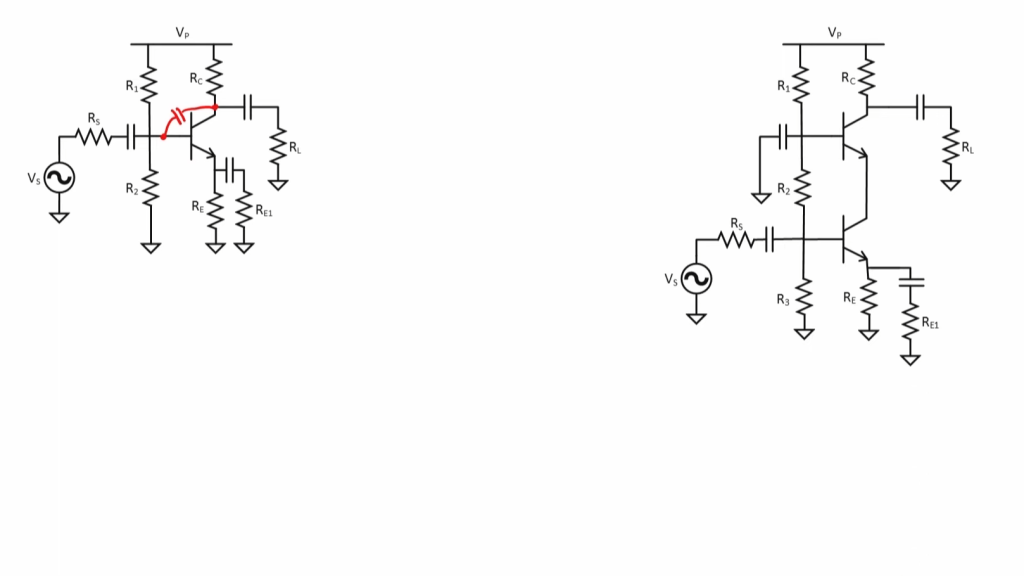
In the Cascode amplifier circuit, the input signal is initially amplified by the NPN transistor in the common emitter configuration. The amplified signal is then fed to the PNP transistor in the common base configuration, which further boosts the signal while maintaining stability. This cascade of amplification stages results in a significant overall gain, making the Cascode amplifier a preferred choice in many electronic systems.
By utilizing the Cascode amplifier, engineers and designers can achieve enhanced performance and precise control over signal amplification. The versatility of this amplifier circuit makes it an indispensable component in various applications, ranging from audio systems to high-frequency communication devices. See the figure below for the schematic representation of a typical Cascode amplifier circuit.
Folded Cascode Amplifier
The folded cascode amplifier is a widely used improvement over the simple cascode circuit due to its higher input impedance and gain. This amplifier utilizes two pairs of transistors connected in series, consisting of an NPN and PNP transistor connected through their base-emitter junctions. This configuration ensures that both transistors remain fully active at all times, resulting in improved stability and overall performance. By allowing for efficient amplification of signals, the folded cascode amplifier is a valuable circuit in various electronic applications. The circuit diagram for the folded cascode amplifier is depicted in the figure below, showcasing the interconnection of its components for optimal functionality [1].
Features of Cascode Amplifier
Frequency Response of Cascode Amplifier
The Cascode amplifier circuit offers an exceptionally wide frequency response, arising from its two-stage configuration. This wideband characteristic allows the amplifier to accurately reproduce signals within a large range of frequencies, without introducing any significant distortion or noise. Moreover, due to the cascaded amplification stages, the frequency response remains relatively constant over a wide range of input and output voltages. This makes the Cascode amplifier well-suited for applications that require accurate signal reproduction over a wide range of frequencies.
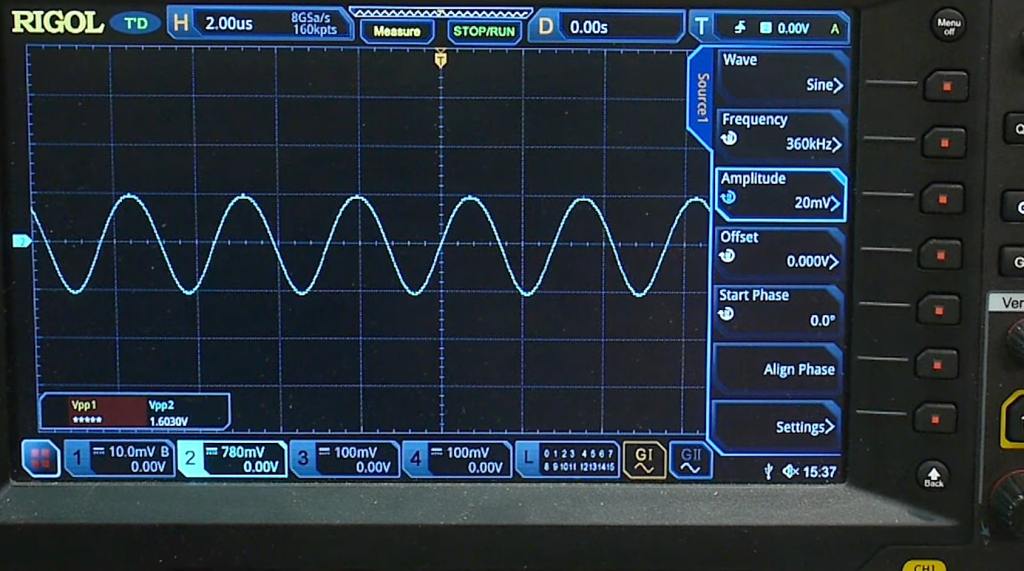
Stability of Cascode Amplifier
The Cascode amplifier, renowned for its exceptional stability, is an optimal choice for applications dealing with high-frequency signals. This stability is achieved through its transistor cascade configuration, which ensures a well-balanced gain across the entire frequency range. Moreover, the two transistors collaborate to limit current and voltage swings, effectively preventing any undesirable overloading or distortion. As a result, the Cascode amplifier remains highly sought-after for precision signal processing applications. Its reputation as a reliable and efficient solution further solidifies its status in the realm of electronic amplification.
Noise Immunity of Cascode Amplifier
The Cascode amplifier, known for its two-stage configuration, not only provides superior noise immunity compared to other amplifier circuits but also offers exceptional signal quality and minimal interference for various applications. By employing transistors as buffers, this amplifier effectively minimizes undesired interference and signal degradation. Moreover, the cascaded amplification stages play a crucial role in limiting potential noise sources from reaching the output stage, ensuring optimal performance. With its advanced design and noise-reducing capabilities, the Cascode amplifier stands as an excellent choice for applications that demand uncompromising signal integrity and superior performance.
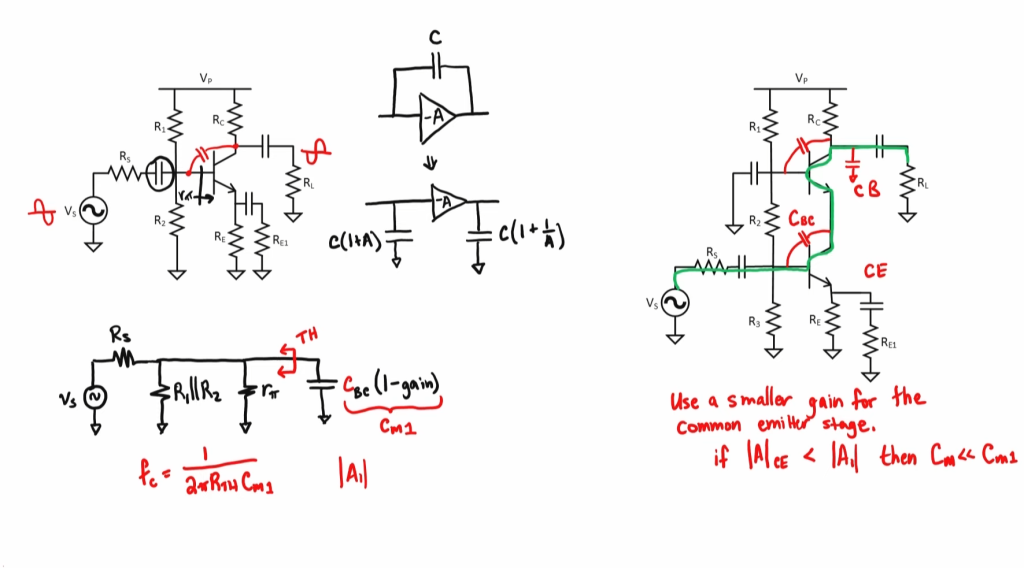
Advantages and Disadvantages of Cascode Amplifier
The Cascode amplifier offers several advantages, such as improved stability, wide frequency response, and noise immunity. This makes the amplifier well-suited for applications requiring precision signal processing. However, this type of amplifier also has some drawbacks.
For instance, when designing a Cascode amplifier, it is important to consider additional components that help maintain balanced gain across the entire frequency range. This ensures optimal performance and avoids any signal distortion. However, it is worth noting that the inclusion of these components can increase the complexity of the circuit design.
Another aspect to consider is the potential generation of excess current and heat by the two transistors used in the Cascode amplifier. This can lead to increased power consumption and may require additional measures, such as heat dissipation techniques, to ensure proper operation.
Despite these potential drawbacks, the Cascode amplifier remains a popular choice for many applications due to its superior performance and versatility. Its ability to provide high gain, low noise, and improved linearity makes it well-suited for various electronic systems, including audio amplifiers and radio frequency (RF) circuits [2].
Applications of Cascode Amplifiers
Due to their wide frequency response, low noise, and improved stability, Cascode amplifiers are widely used in a variety of electronic systems. Some of the most popular applications include:
- Audio Amplifiers: The wide frequency range offered by this type of amplifier makes it ideal for audio amplification. By utilizing the Cascode circuit configuration, engineers can improve sound clarity and reduce distortion, ensuring high-quality sound reproduction.
- Radio Frequency (RF) Circuits:The Cascode amplifier is well-suited for RF applications due to its low noise characteristics and excellent frequency response. This makes it ideal for radio transmitters and receivers, as it can efficiently process signals with minimal interference.
- High Voltage Amplification:As the Cascode amplifier circuit can handle large amounts of current and voltage, it is often used to amplify signals in high-voltage systems. This allows engineers to accurately process signals without introducing any distortion or noise.
Overall, the Cascode amplifier offers an excellent array of features that make it suitable for various applications. With its wide frequency response, low noise characteristics, improved stability, and ability to handle high voltage signals, the Cascode amplifier is an excellent choice for precision signal processing. Its versatility makes it a reliable solution for various electronic systems ranging from audio amplifiers to RF circuits. With its numerous advantages and qualities, the Cascode amplifier remains one of the most widely used solutions in the field of electronics.

What problems can be with a cascode amplifier?
One of the main issues that can be encountered with a cascode amplifier is its potential to suffer from high voltage gain. This is because the transistor in the cascode stage creates an additional gain factor, which can cause oscillations and unwanted feedback in certain conditions. Other possible drawbacks include increased power consumption, reduced input impedance, increased output impedance, and limited output power. Additionally, the high voltage gain of a cascode amplifier can also lead to increased levels of noise and distortion.
Another issue that might be faced when using a cascode amplifier is its susceptibility to thermal issues. If the components in the circuit are not adequately cooled, excessive heat buildup may damage them or cause them to malfunction. To help reduce this risk, it is important to choose an appropriate operating temperature range and ensure adequate heat dissipation. Finally, the cascode amplifier may be more complex to design than other types of amplifiers, which can add extra complexity and cost.
Despite these drawbacks, the cascode amplifier remains one of the most popular types of amplifiers in use today due to its reliable performance and high voltage gain. With careful design and proper cooling, a cascode amplifier can provide excellent performance for many applications.
Additionally, the cascode amplifier provides designers with flexibility in terms of output power and frequency response, making it suitable for a variety of tasks. By staying informed about the potential drawbacks associated with this type of amplifier, engineers can make sure they are using them appropriately and getting the most out of their designs.
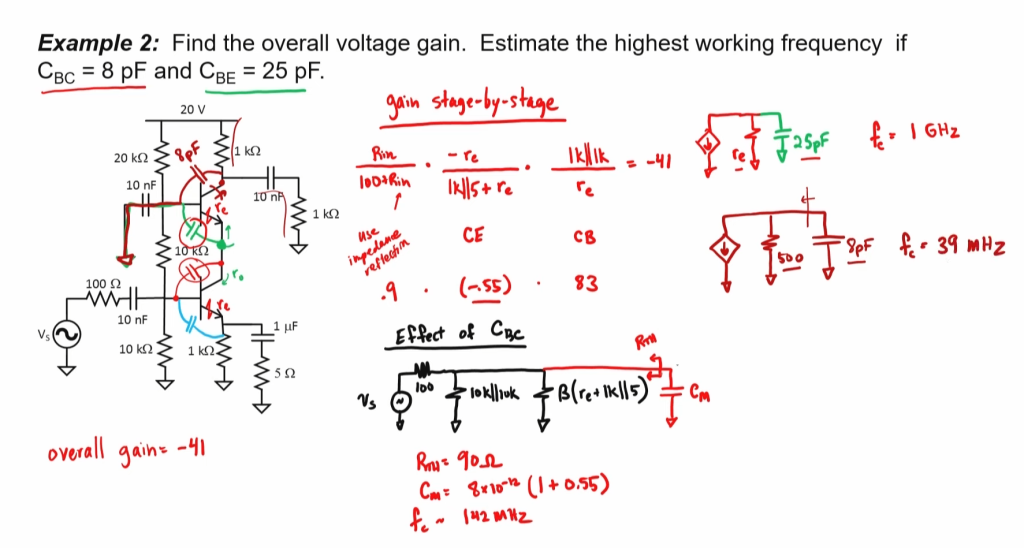
How to maintain a cascode amplifier?
Maintaining a cascode amplifier is relatively simple. Proper installation of the components and correct wiring are essential for optimal performance. Additionally, periodic inspections should be performed to ensure that all connections are secure and that any worn parts have been replaced or repaired in order to maintain the quality of sound achieved by this design.
When installing a cascode amplifier, it is important to ensure that all connections are made securely and that any components used should be of the highest quality for the best results. Additionally, it is important to follow the manufacturer’s instructions carefully when installing or operating the device.
Inspections should be done periodically in order to check for any signs of wear or damage to the components. Worn parts should be replaced immediately to keep the amplifier functioning properly. Additionally, it is important to check for any loose connections or damaged wiring in order to ensure that no problems arise while the amplifier is in use.
Finally, cascode amplifiers should be properly maintained and handled with care as they are delicate pieces of equipment. Regular cleaning of the exterior will help to extend its life while also maintaining its quality. Additionally, it is important to keep the amplifier in an area with low levels of dust and debris in order to prevent any potential build-up from occurring within the device.
Overall, proper maintenance and regular inspections will help keep a cascode amplifier running smoothly and producing great sound for years to come. With a little bit of care, this powerful design can be used to achieve amazing audio quality.
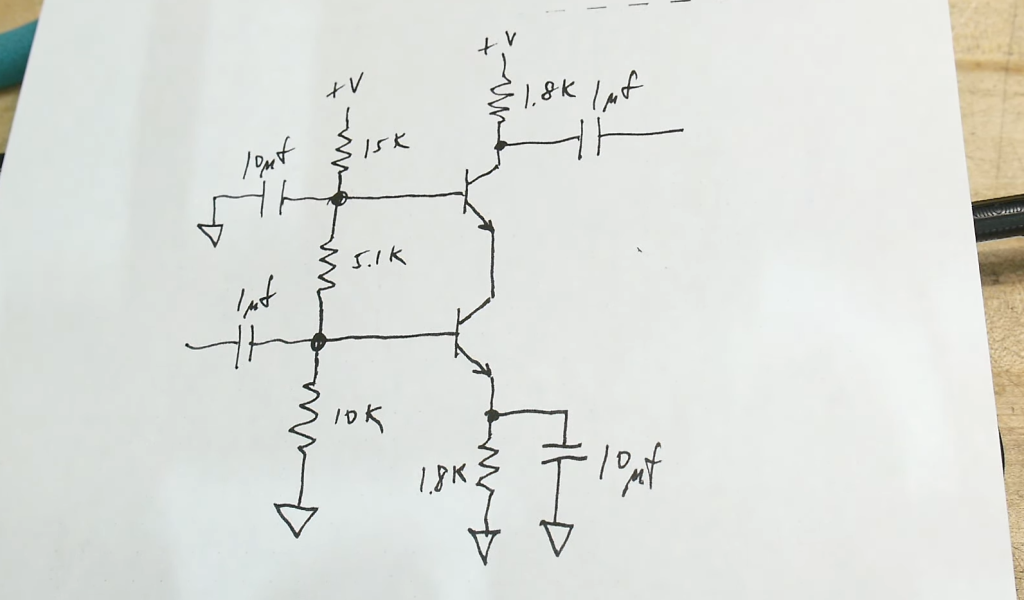
FAQ
What is the difference between a cascade and cascode amplifier?
A cascade amplifier is two amplifiers in series with their outputs connected together, while a cascode amplifier is an arrangement of two transistors with one common emitter and base. A cascade amplifier gives improved gain and stability and can also reduce distortion compared to a single-stage amplifier. A cascode amplifier provides better voltage gain than a single-stage transistor circuit, but its gain is not as high as that of a cascade amplifier. Additionally, cascode amplifiers are more efficient and can handle higher signal levels than single-stage or cascade amplifiers.
What are the advantages of using an operational amplifier?
Operational amplifiers (op-amps) have several advantages over other types of amplifiers. They provide extremely high gain and can be used to amplify small input signals, making them ideal for use in applications such as signal conditioning, data conversion, control systems, and instrumentation. Additionally, op-amps are extremely versatile; different types of feedback networks can be used to tailor the amplifier’s performance for specific tasks. Op-amps also require low power consumption and are relatively inexpensive. Lastly, op-amps are often available in both integrated circuit and discrete form, making them suitable for a wide range of applications.
What is the relationship between input impedance and output impedance?
Input impedance is the amount of resistance that an amplifier presents to a signal entering its input terminals. This value determines how much current flows in response to the input signal. Output impedance is the amount of resistance that an amplifier presents to a signal exiting its output terminals. This value determines how much voltage drop occurs when a load is connected to the output. The ratio between these two values is often referred to as the gain of the amplifier and is typically expressed in decibels (dB). In general, amplifiers with higher input impedance will have lower output impedance (and vice versa), and amplifiers with higher gains will have higher input impedances.
What is the purpose of an AGC circuit?
An Automatic Gain Control (AGC) circuit is used to maintain a constant signal level despite changes in the input signal level or noise. The AGC circuit adjusts the gain of an amplifier based on feedback from the output signal. This helps to ensure that the amplifier’s output remains within a set range, even when the input signal is varying or noisy. AGC circuits are commonly used in radio receivers, audio amplifiers, and other systems where it is important to maintain a consistent signal level.
What are some of the most common applications for op-amps?
Operational amplifiers are used in a wide variety of applications, including signal conditioning, data conversion, control systems, and instrumentation. Op-amps can also be used as voltage comparators to compare two input signals and detect when one exceeds the other. They are also commonly used for operational filter circuits, linear regulators, active filters, oscillators, and audio processing. Additionally, they are used in analog-to-digital and digital-to-analog converters, as well as voltage followers to provide a buffered output signal. Finally, op-amps are often used to amplify small signals in instrumentation amplifiers, such as those found in medical imaging systems.
What is the difference between an inverting and a non-inverting op-amp?
An inverting amplifier is an op-amp circuit with a negative feedback loop, which causes the output signal to be inverted (or flipped) relative to the input signal. A non-inverting amplifier is an op-amp circuit with a positive feedback loop, which causes the output signal to be in phase (i.e., not inverted) relative to the input signal. Inverting amplifiers generally have higher gains than non-inverting amplifiers, but they typically introduce some distortion due to the inversion of the input signal. Non-inverting amplifiers usually have lower gains than inverting amplifiers, but they typically provide better performance with less distortion.
How can an op-amp be used as a rectifier?
An op-amp can be used as a rectifier by connecting it to an input signal and using negative feedback. The output of the amplifier is then clipped at one diode drop below ground level, which produces a rectified version of the input signal. This technique is commonly used in power supplies to convert AC signals into DC signals. It is also sometimes used to reduce noise in signals, such as radio frequency (RF) or audio signals.
What is the purpose of a voltage regulator?
A voltage regulator is a type of electronic circuit that maintains a constant output voltage despite changes in input voltage or load conditions. Voltage regulators are often found in power supplies and other systems where it is important to maintain a stable output voltage. They are typically used with AC input signals, although they can also be used with DC inputs. Voltage regulators help to protect sensitive circuitry from overvoltage or undervoltage conditions, and also reduce noise and other fluctuations in the output signal.
What is the difference between an amplifier and an attenuator?
An amplifier is an electronic circuit that increases the amplitude of a signal. Attenuators, on the other hand, are circuits that reduce the amplitude of a signal. Amplifiers and attenuators can be used together in order to achieve a desired output voltage level. For example, if an audio amplifier is too powerful for the speaker it is connected to, an attenuator can be used to reduce the output voltage level, thereby preventing damage to the speaker.
What is the difference between cascade and cascode?
Cascade is an amplifier configuration in which two or more single-stage amplifiers are connected in series. This arrangement allows for higher gains than a single-stage amplifier and also provides greater stability by reducing the effects of feedback. Cascode is an arrangement in which one transconductance amplifier is connected to a voltage-amplifier stage. This type of circuit allows for higher gains and better linearity than a single-stage amplifier but is more complex to design and build. Both configurations are commonly used in audio amplifiers, radio receivers, and other signal-processing systems.
What is the Slew Rate of an op-amp?
The Slew Rate of an op-amp is a measure of how quickly the output voltage can change in response to changes in the input signal. It is expressed in volts per microsecond (V/μs) and typically ranges from 1 V/μs to 20 V/μs, although higher values are possible. The Slew Rate of an op-amp determines how quickly it can respond to a changing input signal, which is important for applications such as audio processing or radio transmission. In general, higher Slew Rates result in better performance but also require more power.
What is the difference between a single-supply and dual-supply op-amp?
A single-supply op-amp requires only one DC voltage for operation, while a dual-supply op-amp requires two DC voltages for operation. Single-supply op-amps are typically used in applications where only one voltage supply is available, such as battery-powered circuits. Dual-supply op-amps are often used in audio processing and other applications where a wide range of signal levels need to be accommodated. Dual-supply op-amps also tend to have better performance characteristics than single-supply op-amps.
What is the purpose of a current amplifier?
A current amplifier is an electronic circuit used to increase the amplitude or frequency of a signal by amplifying its current. Current amplifiers are often used in audio applications, such as guitar amplifiers and sound systems, but they can also be used for medical and industrial applications. Current amplifiers are usually designed to have high input impedance, low output impedance, high gain and low noise. They are capable of providing large amounts of current over a wide range of frequencies.
What is the objective of a cascode amplifier?
The objective of a cascode amplifier is to provide relatively large amounts of gain with low distortion and stability while also providing the ability to operate at higher frequencies than single-stage amplifiers. Cascode amplifiers are used in a variety of applications, such as audio processing, radio receivers, and signal conditioning circuits. They are capable of providing gains up to 200 dB or more without sacrificing performance or stability.
Conclusion Paragraph
So, a cascode amplifier is a powerful, versatile and efficient amplifier that can be used to amplify low-level signals with high gain across wide bandwidths. It has the advantage of excellent stability and better power efficiency than other amplifiers such as the single-stage common emitter amplifier. The cascode amplifier can also be configured in different topologies such as the grounded emitter cascode (GEC) and cascode current mirror (CCM) to provide even more gain and wide bandwidth. Cascode amplifiers are an important part of most electronic systems such as radio receivers, power amplifiers, video amplifiers, and audio amplifiers. By understanding the principles behind these electronic circuits, engineers can design better systems with improved performance.
Useful Video: Cascode Amplifiers (17-Transistors)
References:
- https://www.utmel.com/blog/categories/amplifiers/what-is-a-cascode-amplifier
- https://www.elprocus.com/cascode-amplifier-working-applications/

